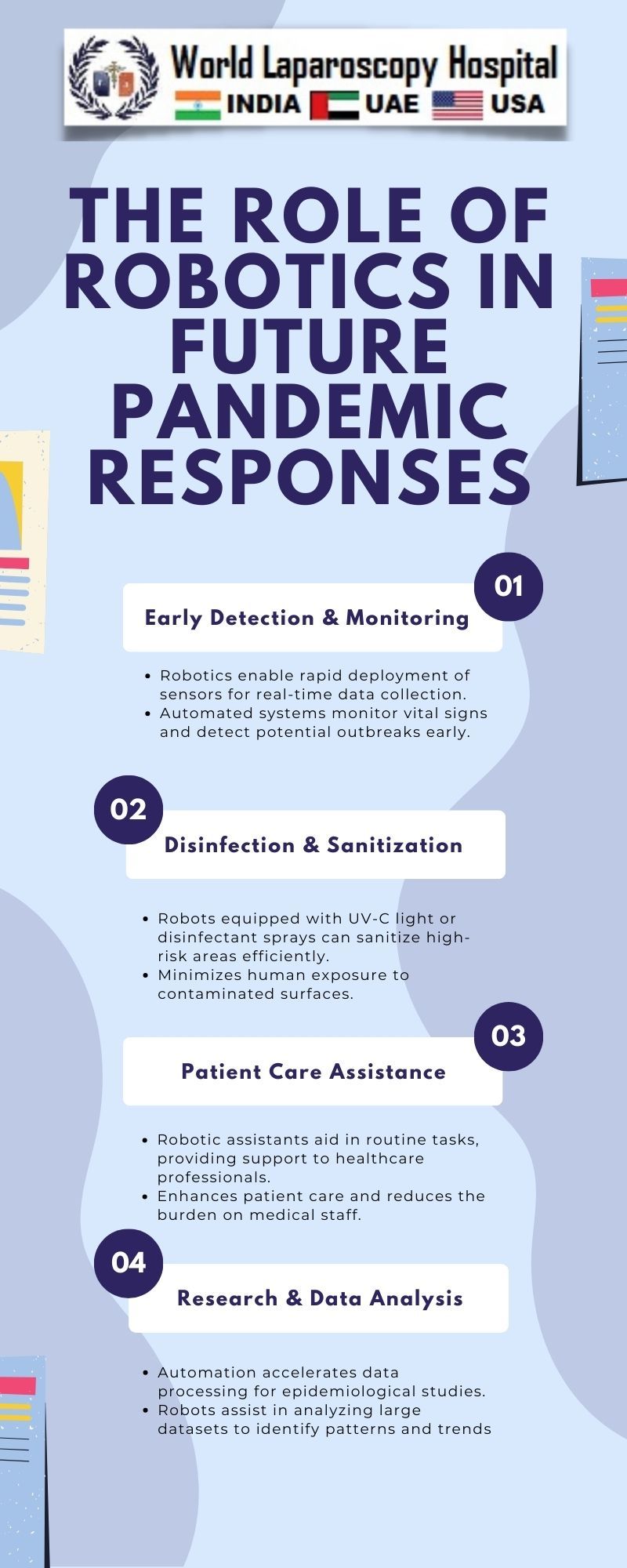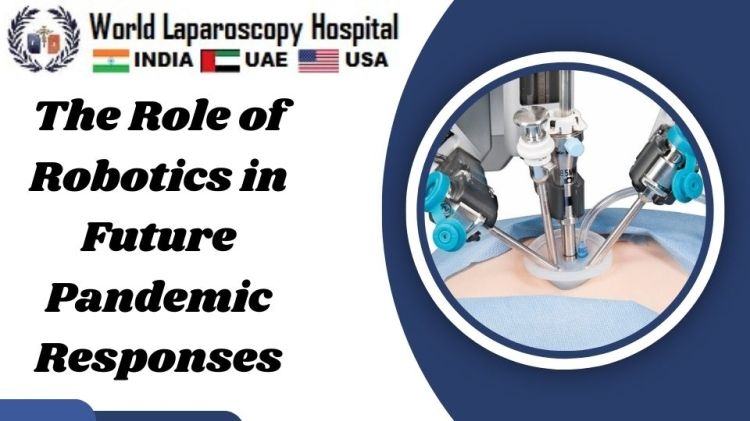The Role of Robotics in Future Pandemic Responses
Introduction:
As the world grapples with the persistent threat of pandemics, the integration of cutting-edge technologies becomes paramount for effective response and management. Among these technological advancements, robotics emerges as a transformative force, reshaping the landscape of pandemic preparedness and response. In this article, we delve into the multifaceted role of robotics in shaping the future of pandemic responses, from autonomous disinfection to telehealth innovations.

One of the primary challenges in combating pandemics is minimizing human contact to curb the spread of infectious agents. Robotics, with its autonomous capabilities, steps in as a powerful ally in this battle. Specialized robots equipped with advanced sensors and AI algorithms can autonomously navigate and disinfect high-risk areas, such as hospitals, airports, and public spaces. These robots utilize UV-C light or chemical agents to eradicate pathogens, ensuring thorough sanitization without putting human lives at risk.
Contactless Delivery Systems:The demand for contactless services has surged during pandemics, and robotics responds with innovative delivery solutions. Autonomous drones and ground-based robots are being employed for the swift and secure delivery of essential supplies, medicines, and even test kits. By reducing human-to-human interactions in the supply chain, these robots contribute significantly to limiting the spread of contagious diseases while maintaining the continuous flow of critical resources.
Remote Healthcare and Diagnostics:Advancements in robotic technologies play a pivotal role in transforming healthcare delivery during pandemics. Telepresence robots enable healthcare professionals to remotely assess and communicate with patients, minimizing the risk of transmission. AI-driven diagnostic robots equipped with sophisticated sensors can conduct rapid testing and provide accurate results, accelerating the identification and isolation of infected individuals. This not only enhances the efficiency of healthcare services but also aids in the early containment of outbreaks.
Surveillance and Monitoring:In the fight against pandemics, timely and accurate data is crucial. Robotics facilitates real-time surveillance and monitoring through the deployment of drones and sensor-equipped robots. These devices can monitor public spaces, detect unusual crowd patterns, and even measure body temperatures. Integrating AI algorithms allows for the analysis of large datasets, enabling authorities to make informed decisions regarding containment measures and resource allocation.
Education and Communication:During pandemics, clear communication and education are essential to ensure public compliance with preventive measures. Social robots equipped with interactive features can serve as effective communication tools. These robots can disseminate information, answer queries, and reinforce guidelines in a friendly and accessible manner, fostering a sense of community responsibility.
Logistics and Resource Management:Efficient logistics and resource management are critical components of pandemic response. Robotics optimizes these processes by automating inventory management, distribution, and transportation. Automated systems can track and manage the availability of medical supplies, ensuring that healthcare facilities have the necessary resources to handle the surge in patients.
Conclusion:
As the world faces the ongoing challenge of pandemics, the role of robotics in shaping the future of response strategies cannot be overstated. From autonomous disinfection to remote healthcare, robotics offers a versatile toolkit for mitigating the impact of infectious outbreaks. Embracing these technological innovations not only enhances the efficiency of pandemic responses but also fosters a more resilient and adaptable healthcare system, better prepared to confront the challenges of the future. The integration of robotics represents a paradigm shift, marking the dawn of a new era in global health security.






